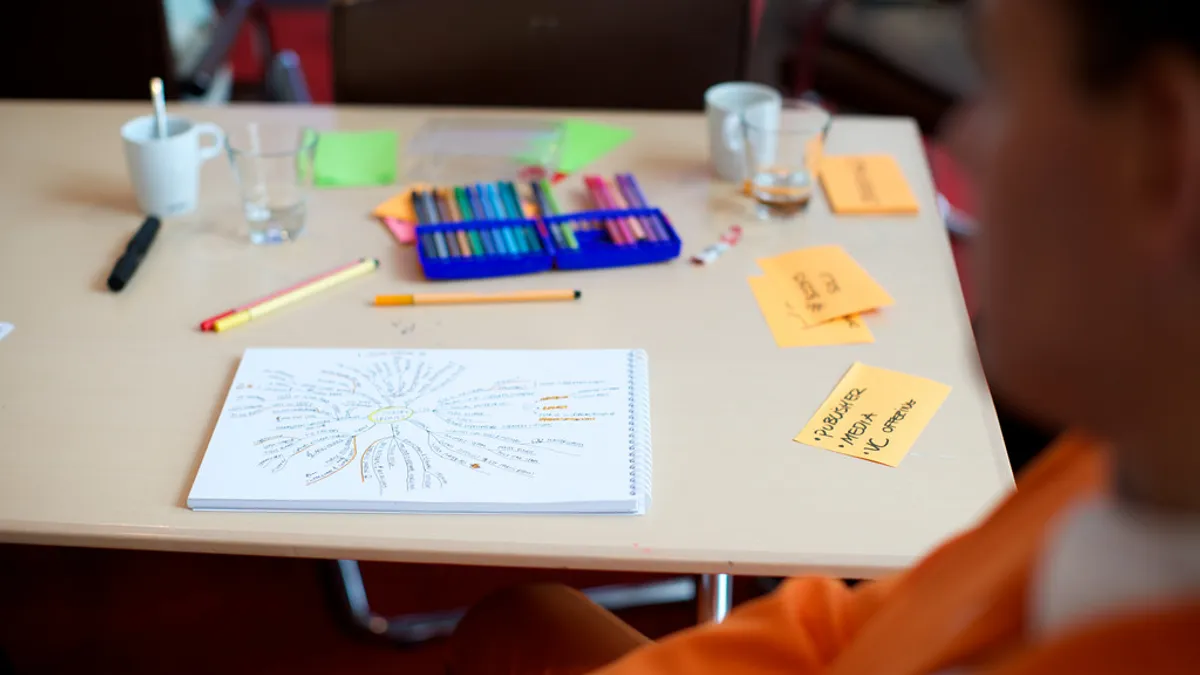Dive Brief:
- A recent webinar saw Crayola Education Director Cheri Sterman, Arts Academy (PA) Multi-Tier Support Systems Specialist Nancy Horvat, and Bullis Charter School (CA) Director of Strategic Initiatives and Partnerships Jessica Lura address the benefits of art in helping students build leadership skills and confidence.
- According to eSchool News, the trio discussed a SEEK model that encourages students to think critically in terms of what they see and their ability to provide evidence, explain decisions made by the artist, and discuss what they know and want to know about a piece — all inquiry-based life skills that can be used in other subjects or beyond the classroom.
- Another exercise suggested is using a viewfinder to examine everyday objects and point out their "extraordinary" qualities, exemplifying a leader's need to see things from a different point of view, as well as an exercise in which a student describes a portrait to a second student, who must then attempt to recreate it.
Dive Insight:
With the increase in focus on science, technology, engineering and mathematics (STEM) subjects in recent years, arts education advocates have lamented ongoing declines in funding and argued for the importance of these subjects in a well-rounded education. Some have argued that the computational thinking valued in STEM can be applied in a number of other areas like music, where algorithms and pattern recognition can be used in the examination of art. Conversely, music education has been argued to boost students' math skills.
The rise in focus on STEM skills has also seen many employers argue for equal — and perhaps even more — focus on "soft skills" around critical and creative thinking, teamwork, flexibility and empathy. These are all skills that contribute to stronger leadership ability over time and are frequently at the center of arts ed, further driving home the value for a well-rounded education over one that focuses too stringently on a set of fast-changing hard skills that are in demand today but could shift with economic needs in the future.








 Dive Awards
Dive Awards





